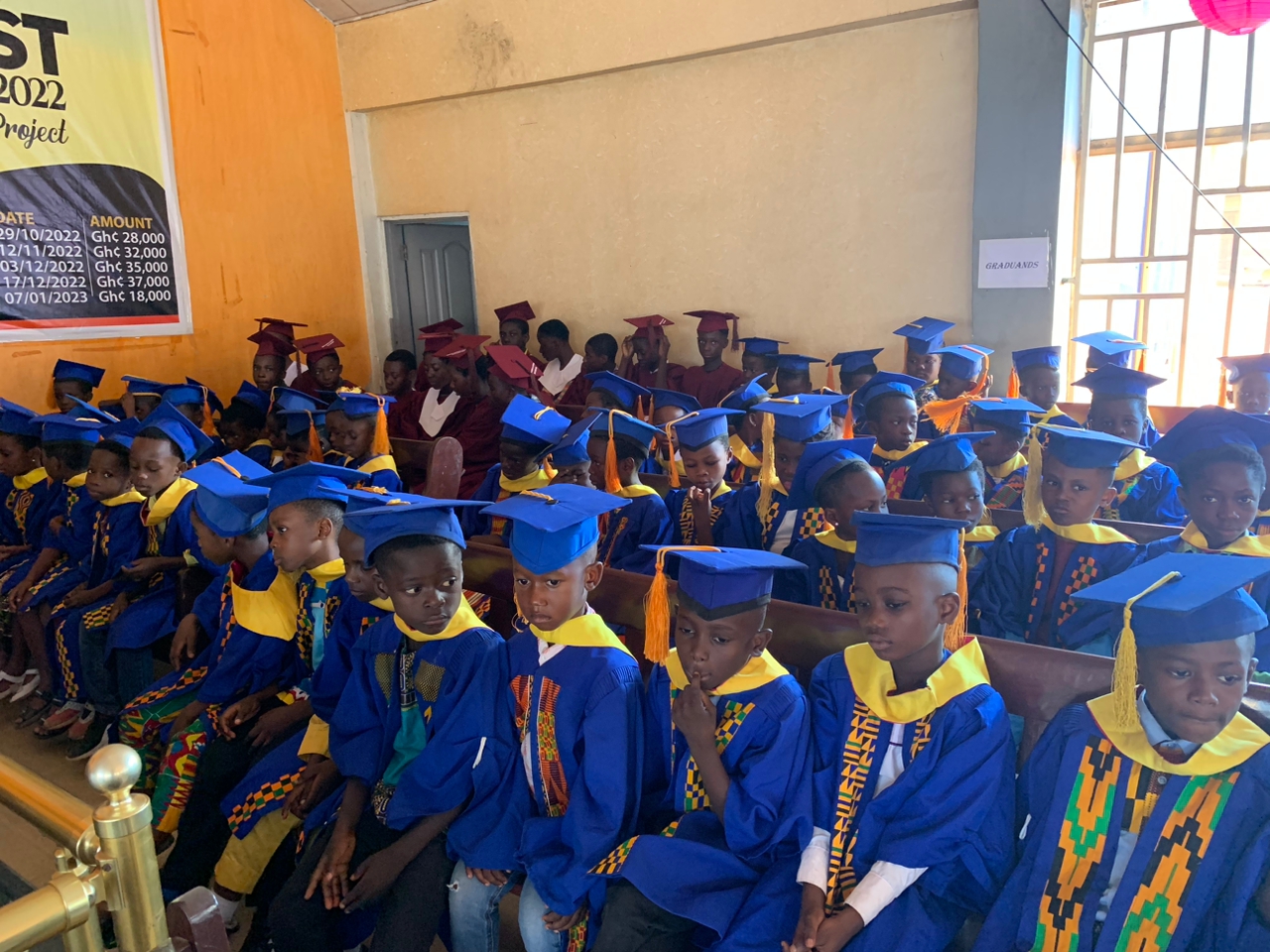Professor Emmanuel Marfo-Owusu, the Foundation Dean of School of Sciences and the Head of Chemical Sciences Department of the University of Energy and Natural Resources (UENR) has called for an X-ray Synchrotron Radiation Facility push Science and Innovation Research Studies in the country.
“The country also needs X-ray Crystallography Laboratories too”, Prof. Marfo-Owusu stated when he spoke on the topic “The Pathway for Ghana’s Development and Advancement in Chemical, Material, Pharmaceutical, and Medical Sciences Research Breakthroughs:-The X-Ray Crystallography and Supramolecular Chemistry Approach” at the first inaugural lecture of the University, held at Fiapre, near Sunyani.
He said such a Radiation facility ought to be equipped with state-of-art equipment and analytical tools or instruments required for various areas of research in material, chemical, pharmaceutical and medical sciences.
“The facility could also have a lodging facility, library, and cafeteria, good and stable flow of electricity to enable researchers from all walks of life in Ghana and other parts of the world to appreciate their time in conducting research analysis on their samples in such a facility”, he added.
Prof. Marfo-Owusu explained the facility would generate so much funds for the country, and make scientists in the country more productive as well as enhance the nation’s development in science and technology, and also reduce the cost of travelling by scientists who go overseas to perform analysis on their samples.
“Ghana could be the first country in Africa to have X-ray Synchrotron Radiation Facility if it can be considered by the government”, he added.
He said most of the scientific breakthroughs had been attributed to the revelations of scientific results obtained from crystallographic studies, saying “it is worth mentioning that two-thirds of Nobel laureates have been crystallographers in the field of Chemistry, Physics, medicine, biochemistry, pharmaceutical chemistry and material science”.
Prof. Marfo-Owusu elaborated on advances in X-ray crystallography and supramolecular chemistry research studies, as well as applications of crystallography techniques and supramolecular chemistry concepts with other experimental methods which were utilized in his research studies that had pharmaceutical significance, as well as its application in separation science, and biomembrane studies.
The University Prof. further highlighted how X-ray crystallography has contributed in solving challenging issues of the world through X-ray structural studies by X-ray diffraction techniques using X-ray synchrotron radiation source as well as X-ray vacuum tubes, diffractometers and other crystallographic techniques.
Prof. Marfo-Owusu indicated X-ray crystallography remained fundamental in the development of many scientific fields, particularly its immense contribution to research in the medical sciences, virology, structural genome, cancer research, enzymology, pharmaceuticals, superconductors, semiconductors, magnetic materials, laser materials, polymers, battery and fuel cell materials, zeolites, smart materials (materials under stress), mineralogy, geosciences, separation science and many other areas.
Typically, the determination of crystal structures such as DNA, Insulin, Vitamin B-12, Penicillin, Hemoglobin, Myoglobin, HIV protease inhibitors or drugs as well as the different forms of solids that improve the physicochemical properties or biological activity of Active Pharmaceutical Ingredients of various pharmaceutical drugs, have all helped in solving challenging problems in the world and made life easier for people on earth.
“Again, it’s worth mentioning that knowledge of the structural information of active pharmaceutical ingredients (APIs) is a prerequisite for rational drug design and synthesis of new chemical entities for development as new medicines”, he added.
Prof. Marfo-Owusu said changes in drug properties such as solubility, dissolution rate, physical and chemical stability, permeability, and hygroscopicity had successfully been correlated with the crystal structures of API and its cocrystals.
Recently, scientists at the University of Ghana successfully sequenced the genome of SARS-CoV-2, the virus responsible for the global COVID-19 pandemic, obtaining important information about the genetic composition of the viral strains but lacked knowledge on the crystal structure of the virus that could have given these scientists knowledge on the binding sites on the protein molecule (virus) for a probable drug (guest) with complementary binding sites to clamp onto the host protein (virus) molecule and thereby disable their harmful activity.
“Such limitation is a reminder for the molecular scientists in Ghana that Ghana do have the scientists to tackle challenging molecular science issues but due to lack of facilities (such as X-ray Synchrotron Radiation Facility and X-ray Crystallography Laboratories) as well as personnels or professionals (small molecule and macromolecule crystallographers) in the country, our scientists will continue to struggle to achieve greater advances in science and innovation and will not be able to have breakthroughs that could also pave way for them to be considered for Nobel prizes or as Nobel laureates, as well as not be able to contribute immensely to economic development through science and innovation”.
Thus, there is no doubt that the influence of X-ray crystallography applications and its usefulness to human beings' lives have been very significant, but it is very unfortunate that this area of science has not received favorable publicity in Ghana’s science based tertiary institutions, research institutions, chemical and medical laboratories.
These techniques, Prof. Marfo-Owusu added, were very useful tools for in depth understanding of frontier science research studies in molecular sciences in respect to structure-property as well as functions of molecular materials.
He therefore highlighted the need for introducing X-ray crystallography and supramolecular chemistry techniques and applications in Ghana’s science based tertiary institutions, research institutions, chemical and medical laboratories.
“It will be very laudable for the Government of Ghana and scientist’s community in Ghana to also consider having excellent state-of-art equipped crystallography research laboratories as well as train many crystallographers (small molecule and macromolecule crystallographers) for the purpose of enhancing research knowledge in molecular science.
Prof. Marfo-Owusu said the country required scientists in this area, “who can also contribute immensely to solving challenging molecular science issues”.
Presently, the crystallographers in the country are only two Prof. Marfo-Owusu, and Prof. Kingsford Adaboh of the Chemistry Department, University of Ghana.
Prof. Marfo-Owusu also called on the government to encourage and reward researchers who through their research project(s) contributed to economic growth and development and called for the establishment of national library purposely for archiving all important research projects and graduate studies research in chemical, material, pharmaceutical and medical sciences to serve the nation as a source of information for future researchers”.
“The Government of Ghana is also encouraged to make an effort to invest heavily in research on molecular science with respect to research in areas such as determining the molecular structures of therapeutic compounds in various important herbal medicines or drugs”, he said.
The determination of such structures will contribute to knowing the pathways for synthesis of such drugs by the pharmaceutical scientists and industries. Our Gold or minerals, oil, and other natural resources cannot sustain the economy for a very long time but good and intensive investment in science and innovation research studies can save our economy (Ghana) in due course of time and make the nation self-reliant.
He further called on pharmaceutical industries in the country to collaborate more with the universities to perform all kinds of research on various drugs such as identifying drugs that form polymorphs and could change the drug’s therapeutic effect.
The government needs to invest tremendously in establishing more chemical producing companies to enable scientists’ access to chemicals and reagents without the need to wait for several days, months and years to obtain chemicals or reagents needed for research work from overseas.
This, he added, would enhance the rate of productivity, and further a national database of scientists and their respective areas of expertise to enable the nation to know areas of sciences that it lacks personnel as well as know who to employ for a national duty whenever needed.
It is recommended for the Government of Ghana to have priority areas of research in the sciences, medicine and engineering with good funding from the Government for research projects within a good specified period after which the research outcomes applications in industries and medical fields could be utilized for enhancement of economic growth.
Prof. Marfo-Owusu is a registered member of the Users of Diamond Light Source Ltd (X-ray Synchrotron Radiation Facility) in Harwell Science and Innovation Laboratory at Didcot, Oxfordshire-U.K.
He got registered as a User in the facility through the support of the Chemical Crystallography Laboratory in the Department of Chemistry at University of Oxford, Oxford-U.K, while there as a sponsored researcher and pursued structural studies on some series of supramolecular complexes in the Chemical Crystallography Laboratory.













 Sompaonline.com offers its reading audience with a comprehensive online source for up-to-the-minute news about politics, business, entertainment and other issues in Ghana
Sompaonline.com offers its reading audience with a comprehensive online source for up-to-the-minute news about politics, business, entertainment and other issues in Ghana